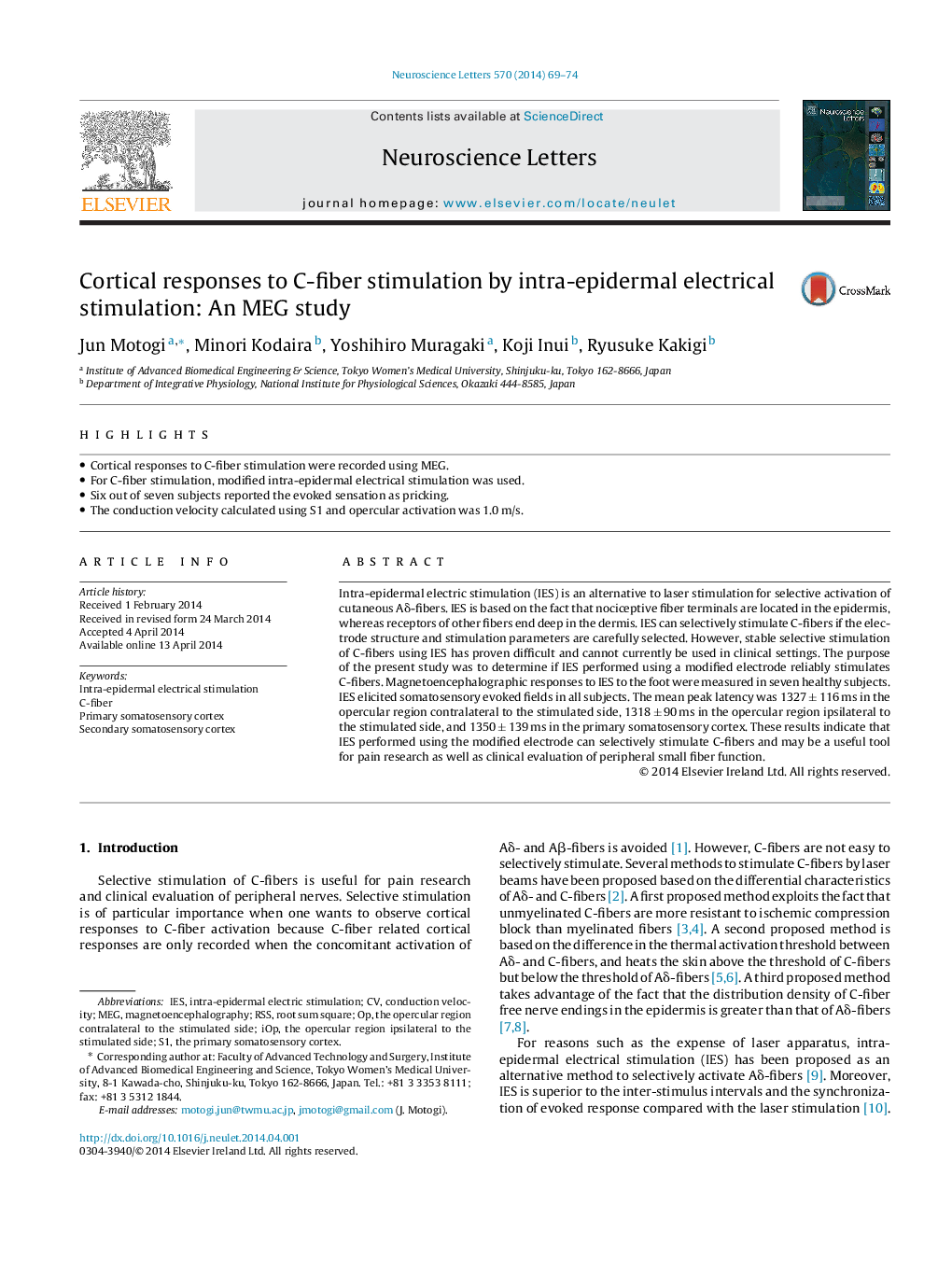| Article ID | Journal | Published Year | Pages | File Type |
|---|---|---|---|---|
| 6281864 | Neuroscience Letters | 2014 | 6 Pages |
â¢Cortical responses to C-fiber stimulation were recorded using MEG.â¢For C-fiber stimulation, modified intra-epidermal electrical stimulation was used.â¢Six out of seven subjects reported the evoked sensation as pricking.â¢The conduction velocity calculated using S1 and opercular activation was 1.0 m/s.
Intra-epidermal electric stimulation (IES) is an alternative to laser stimulation for selective activation of cutaneous Aδ-fibers. IES is based on the fact that nociceptive fiber terminals are located in the epidermis, whereas receptors of other fibers end deep in the dermis. IES can selectively stimulate C-fibers if the electrode structure and stimulation parameters are carefully selected. However, stable selective stimulation of C-fibers using IES has proven difficult and cannot currently be used in clinical settings. The purpose of the present study was to determine if IES performed using a modified electrode reliably stimulates C-fibers. Magnetoencephalographic responses to IES to the foot were measured in seven healthy subjects. IES elicited somatosensory evoked fields in all subjects. The mean peak latency was 1327 ± 116 ms in the opercular region contralateral to the stimulated side, 1318 ± 90 ms in the opercular region ipsilateral to the stimulated side, and 1350 ± 139 ms in the primary somatosensory cortex. These results indicate that IES performed using the modified electrode can selectively stimulate C-fibers and may be a useful tool for pain research as well as clinical evaluation of peripheral small fiber function.
